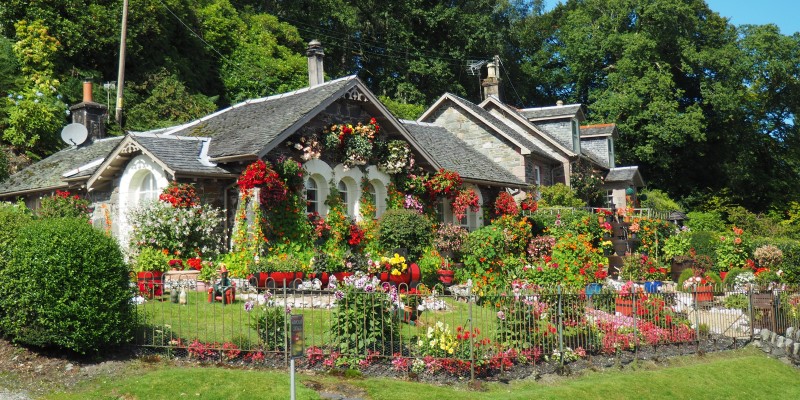Welcome to the world of Permaculture Australia, where sustainable ecosystems flourish! In this exciting article, we’ll look into the heart of Permaculture – what it is, its fascinating history, its many benefits, its importance in agriculture, and most importantly, how you can create your own thriving permaculture garden.
Ever wondered how to turn your outdoor space into a haven of abundance where nature and human ingenuity work hand in hand? We’ve got you covered. From the basics of Permaculture principles to the nitty-gritty of setting up your own garden oasis, we’ll guide you through every step of the way.
Discover the magic of designing landscapes that mimic the patterns found in nature, resulting in bountiful yields and harmonious coexistence with our environment. Learn how Permaculture Australia has revolutionized sustainable living practices in our country, and be prepared to unearth practical insights you can apply in your backyard.
So, if you’re ready to embark on an eco-friendly and enriching journey, stick with us. By the end, you’ll be inspired to jumpstart your permaculture adventure and contribute to a greener, more sustainable future. Let’s dive in and start sowing the seeds of change!
Permaculture is the design of a landscape that mimics the patterns found in nature.
It allows a harmonious coexistence with our environment.
Key Takeaways
- Permaculture is a sustainable design system that focuses on creating harmonious ecosystems.
- It was developed in Australia in the 1970s as a response to unsustainable agricultural practices.
- Permaculture utilizes principles such as observation, integration, and diversity to be self-sufficient and productive.
- It promotes environmental sustainability and resilience by minimizing waste, maximizing productivity, and creating habitats for beneficial insects and birds.
Table of Contents

What is Permaculture?
Permaculture, a sustainable design system, has a rich history that dates back to the 1970s. It was developed by Bill Mollison and David Holmgren in Australia as a response to the environmental challenges of their time. Permaculture focuses on creating harmonious ecosystems that are self-sustaining and productive, utilizing principles such as observation, integration, and diversity.
The History of Permaculture
Let’s take a quick look at the history of permaculture and how it has evolved. Permaculture, a term coined by Bill Mollison and David Holmgren in the 1970s, is a sustainable design system aiming to create an ecosystem that meets human needs while benefiting the environment. Here are four key points about the history of permaculture:
- Origin: Permaculture emerged as a response to unsustainable agricultural practices and the need for ecological solutions.
- Principles: Permaculture is based on ethics such as caring for people, the earth, and fair share. These principles guide practitioners in designing sustainable systems.
- Global Impact: Permaculture has gained global recognition and has been implemented in various countries worldwide, positively impacting communities and ecosystems.
- Evolution: Over time, permaculture has expanded beyond agriculture to include energy systems, water management, and urban design.
By understanding its rich history, we can appreciate the evolution of permaculture as a solution-oriented approach towards creating sustainable ecosystems.
Permaculture Australia: Benefits and Principles
Permaculture design offers a holistic approach to gardening that focuses on regenerating natural systems while promoting biodiversity. By implementing permaculture principles, you can create a self-sustaining garden that minimizes waste and maximizes productivity. One key benefit is the reduction of water usage through techniques such as rainwater harvesting and efficient irrigation systems.
Additionally, permaculture gardens naturally build healthy soil through composting and mulching, resulting in nutrient-rich soil for plants to thrive. This approach also encourages the use of native plants, which require less maintenance and support local wildlife populations. By integrating diverse plant species, permaculture gardens create habitats that attract beneficial insects and birds, contributing to a balanced ecosystem. Embracing permaculture principles promotes sustainability and fosters resilience within our environment.
Applications in Agriculture
In permaculture agriculture, the design of your farm is crucial for its success. It determines how efficiently you can use resources, how well the ecosystem functions, and how productive your farm will be. By carefully planning and implementing a permaculture design, you can create a sustainable and resilient farming system that meets your needs while benefiting the environment.
The Importance of Permaculture Farm Design
Practice permaculture principles and utilize an effective design system to ensure the resilience of your farm. The design of your farm plays a crucial role in promoting sustainability and maximizing efficiency. By carefully planning the layout of your farm, you can create a harmonious balance between different elements such as plants, animals, and structures. A well-designed permaculture farm incorporates techniques such as contouring the land, creating swales and berms to manage water flow, and integrating diverse plant species to enhance biodiversity and nutrient cycling. This thoughtful design not only improves your farm’s overall productivity but also reduces the need for external inputs like fertilizers or pesticides. By implementing a practical design, you can create a self-sustaining ecosystem that thrives on its own natural processes while minimizing environmental impact.

Examples Of Permaculture
Try incorporating permaculture principles into your garden to create a sustainable ecosystem. Permaculture is a regenerative design approach that aims to mimic natural ecosystems, promoting biodiversity and reducing waste. By implementing permaculture techniques, you can enhance the overall health of your garden while contributing positively to the surrounding ecology. Here are five examples of how permaculture can benefit your garden:
- Polyculture: Instead of planting mono-crops, diversify your garden by growing various plants together. This diversity increases the gardens’ strength against pests and diseases.
- Companion Planting: Certain plants have mutually beneficial relationships when grown together. For example, planting marigolds with tomatoes can deter pests naturally.
- Rainwater Harvesting: Collect rainwater in barrels or tanks for irrigation, reducing reliance on unsustainable water sources.
- Composting: Create nutrient-rich compost from kitchen scraps and yard waste to improve soil fertility organically.
- Wildlife Habitat Creation: Incorporate features like birdhouses, bee hotels, and ponds to attract beneficial wildlife.
By implementing these practices, you can create a thriving and sustainable ecosystem in your own backyard.
How do I start a permaculture garden in Australia?
If you’re interested in getting started on your own permaculture garden, it’s certainly possible! Do a little research, either online or at your local library. Look at your garden space with a critical eye, noting the contours and slopes. Map out a basic plan and look into the types of trees and plants that will thrive in your area.
Once you’re ready to get started:
- Consider researching and implementing techniques that mimic natural ecosystems and promote the variety of all living things.
- Prepare your soil with organic matter and mulch to improve fertility and water retention.
- Choose native plants that are well-adapted to the local climate and can attract beneficial insects.
- Integrate fruit trees into your garden to grow food yourself and be more self-reliant.
- Implement efficient irrigation systems, such as drip irrigation or swales, to minimize water usage.
- Consider taking a permaculture design course to understand permaculture principles and techniques better. A course will help you plan and implement your garden effectively, ensuring its long-term sustainability.
By following these steps, you can create a thriving permaculture garden that produces food and supports the health of the surrounding ecosystem.
Frequently Asked Questions (FAQ)
What is permaculture?
Permaculture is a design system that aims to create sustainable and resilient human settlements by working with nature. It involves techniques and practices that mimic the patterns and relationships found in natural ecosystems.
How can permaculture be applied to a farm or garden?
Permaculture can be applied to a farm or garden using regenerative agricultural techniques, such as agroforestry, to create a sustainable and productive ecosystem that mimics natural systems.
What are the principles of permaculture?
The permaculture principles guide the design and implementation of permaculture systems. They include care for the earth, people, and fair share. These principles provide a framework for conscious design and maintenance of agriculturally productive ecosystems.

How can I learn more about permaculture design?
You can learn more about permaculture design principles by taking a permaculture design course. This type of course covers the theory and way to practice permaculture and provides the knowledge and skills needed to create sustainable and productive agricultural systems.
What is the importance of biodiversity in permaculture?
Biodiversity is a fundamental aspect of permaculture. It promotes ecological balance and the resilience of natural ecosystems. By incorporating a wide variety of plants, animals, and microorganisms, permaculture systems enhance the overall health and productivity of the ecosystem.
How can I implement water conservation in permaculture?
Water conservation is a key aspect of permaculture. Techniques such as capturing and storing rainwater, implementing efficient irrigation systems, and using mulch can help conserve water resources and maintain a sustainable water cycle within a permaculture system.
Who are some of the notable figures in permaculture?
Two of the notable figures in permaculture are Bill Mollison and David Holmgren. They are considered the founders of permaculture and have made significant contributions to the development of permaculture as a holistic design practice that aims to regenerate the environment and promote sustainable living.
Conclusion
Permaculture offers a solution-oriented approach to creating sustainable ecosystems in Australia. By implementing the principles and practices of permaculture, individuals can positively impact the environment and their communities. Whether it’s through designing a permaculture garden or adopting permaculture techniques in agriculture, there are various ways to get started. With its focus on regenerative practices and resourcefulness, permaculture provides hope for a more sustainable future in Australia and beyond.
About the Author

ALEX
Alex is an adventurous guy in his early 30s who embodies a touch of the hippie. Passionate about social and environmental causes, he’s managed to travel the world, from immersing himself in Japanese culture for a year to embarking on a six-month backpacking escapade through Peru. Alex loves to learn and has taken numerous courses in Environmental Science and Conservation.
Alex’s commitment to recycling fuels his mission to repurpose discarded items. As a result, he favours garage sale treasures over department stores. He prefers walking and biking to driving. Alex spreads awareness about organic living through Just Organics, joined by his like-minded friend Charlie.
